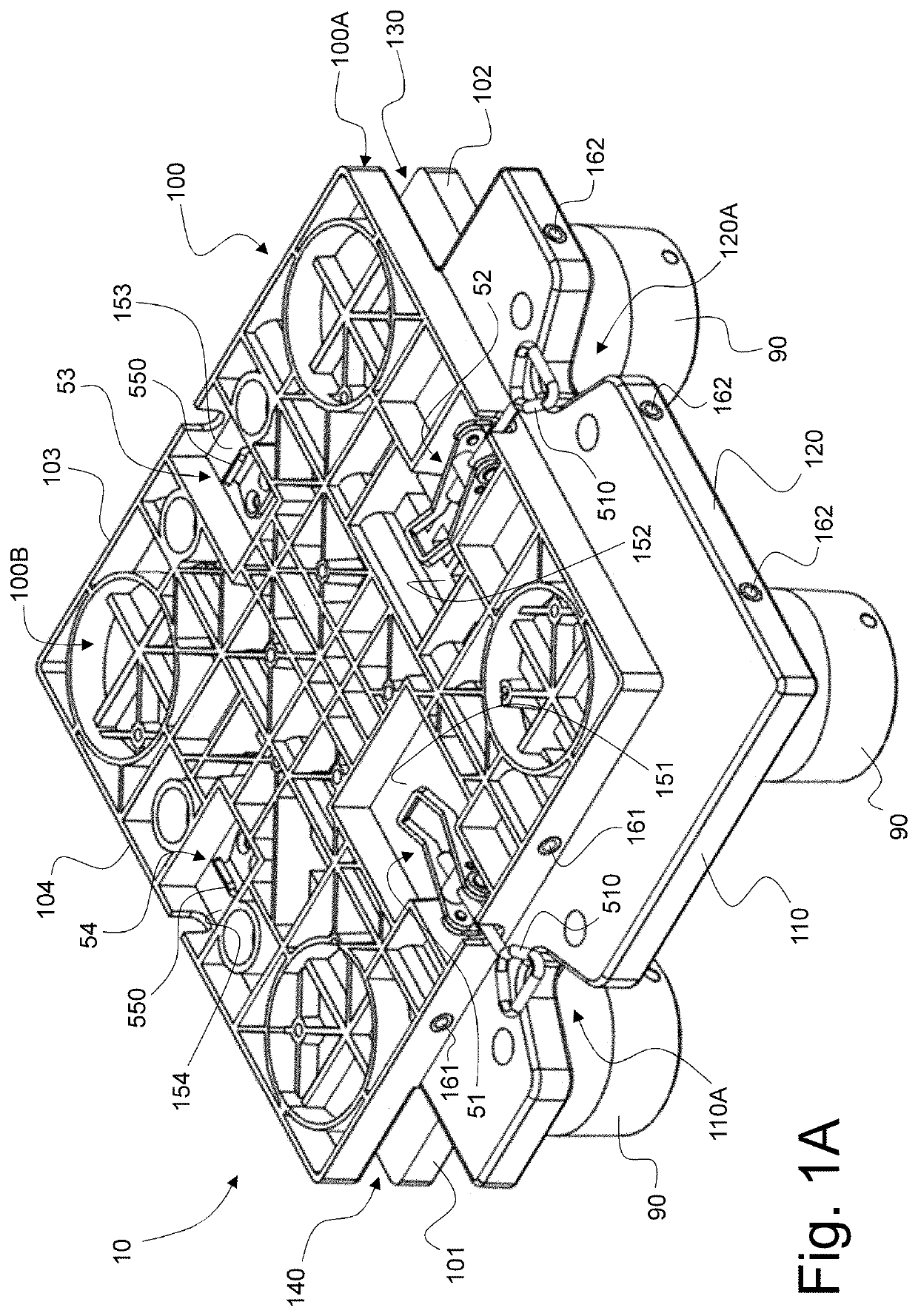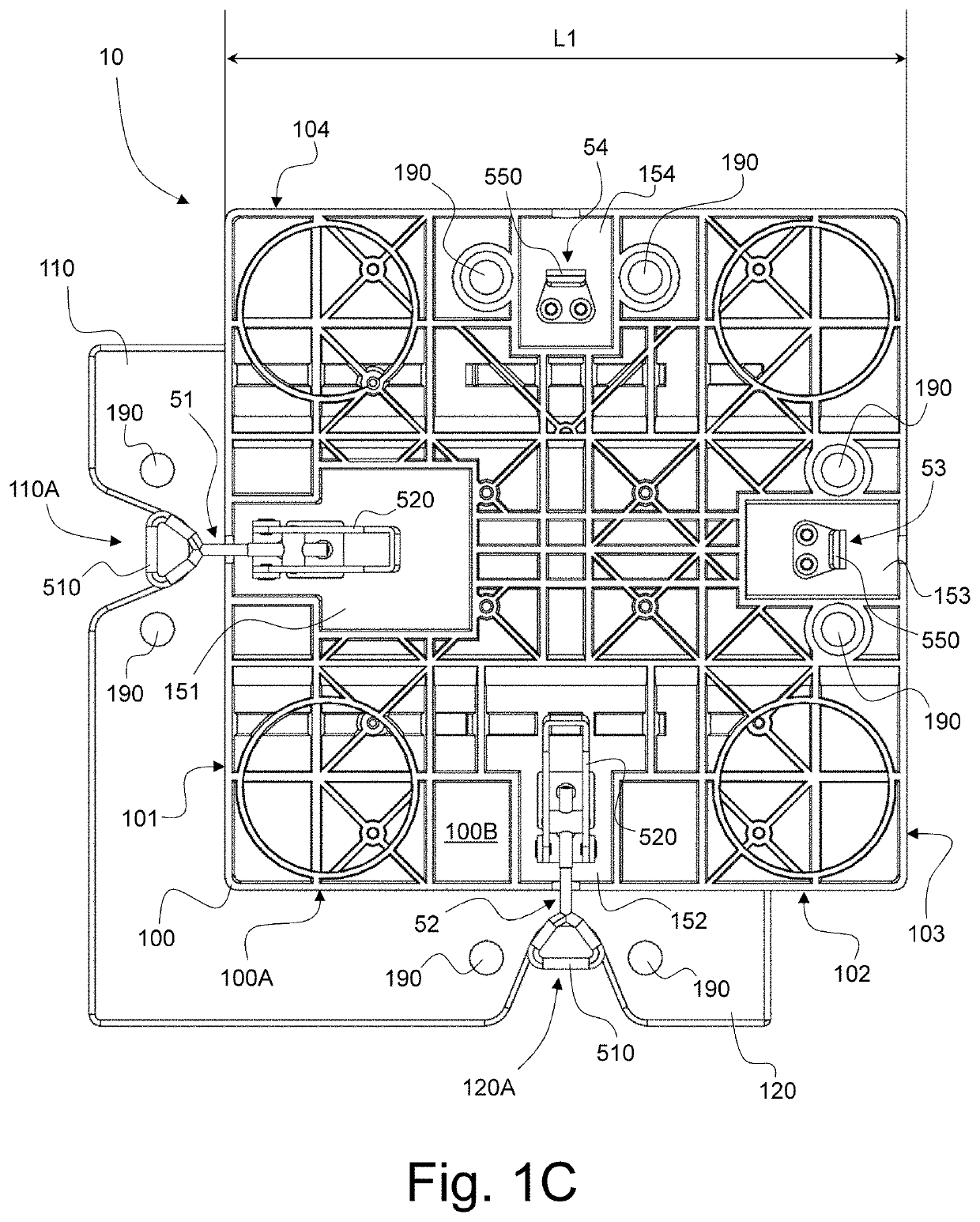Assortment of pallet modules, and pallet assembly built of the same
a technology of pallet modules and pallet assembly, which is applied in the field of pallet module assortment, can solve the problems of reducing efficiency in use, prone to breakage, and possible disconnection of pallet modules, and achieves the effects of increasing sustainability, facilitating assembly and quick disassembly, and improving efficiency and ease of us
- Summary
- Abstract
- Description
- Claims
- Application Information
AI Technical Summary
Benefits of technology
Problems solved by technology
Method used
Image
Examples
Embodiment Construction
[0081]The present invention will be described in relation to various illustrative embodiments. It shall be understood that the scope of the invention encompasses all combinations and sub-combinations of the features of the embodiments disclosed herein.
[0082]As described herein, when two or more parts or components are described as being connected, secured or coupled to one another, they can be so connected, secured or coupled directly to each other or through one or more intermediary parts.
[0083]In the context of the present invention, the expressions “pallet module” and “pallet assembly” are understood to refer to self-supporting platforms configured to allow the handling and transportation of goods, as used in particular for freight logistics, warehousing, transport and / or shipment purposes. Other similar purposes may also come into consideration, including e.g. intralogistics, namely the logistical handling of goods within the walls of a production or distribution center. More sp...
PUM
 Login to View More
Login to View More Abstract
Description
Claims
Application Information
 Login to View More
Login to View More - R&D
- Intellectual Property
- Life Sciences
- Materials
- Tech Scout
- Unparalleled Data Quality
- Higher Quality Content
- 60% Fewer Hallucinations
Browse by: Latest US Patents, China's latest patents, Technical Efficacy Thesaurus, Application Domain, Technology Topic, Popular Technical Reports.
© 2025 PatSnap. All rights reserved.Legal|Privacy policy|Modern Slavery Act Transparency Statement|Sitemap|About US| Contact US: help@patsnap.com



